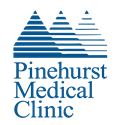January 8th, 2024

By: Michael Cowherd, MD, RPVI
Whether it’s from working out or standing too long, leg pain will probably affect everyone at least once in their lives. However, there are times when the pain becomes something that should not be ignored.
Peripheral artery disease (PAD) is a condition where one has a blockage of the arteries preventing proper blood flow to the legs. A tell-tale sign someone may be suffering from PAD is feeling leg pain or cramping with exertion and feeling relief from that pain when at rest. In severe cases, some may experience wounds on their toes and feet that do not heal as quickly as they should. If one is suffering from any of these issues, it is probably time to consult a vascular specialist.
There are a few different ways PAD is diagnosed. Reduced pulses in the leg area is the most common. More advanced ways include taking blood pressure in the legs to see if blood flow is reduced, or getting an ultrasound test of the legs.
The good news? PAD is preventable.
There are several actions one can take to decrease their chances of developing the disease. The most important is to not smoke. Other methods include getting at least 60 minutes of moderate exercise each week and eating a healthy diet. Being screened and treated for diseases like diabetes, high blood pressure and high cholesterol can help prevent PAD. This is especially important for those 70 and older.
Proper treatment can be ensured by seeing a vascular specialist. In some cases, PAD can be treated with medication alone. In more severe cases, a procedure may be necessary in which a catheter is used to open the arteries and clear the blockages. In the most severe cases open surgery may be needed. These procedures are performed to help with symptoms and prevent limb loss.
Like many health conditions, the quicker PAD is diagnosed, the better the outcomes can be.
Michael Cowherd, MD, is a board certified interventional cardiologist with FirstHealth Cardiology – Pinehurst Medical Clinic.
Back





